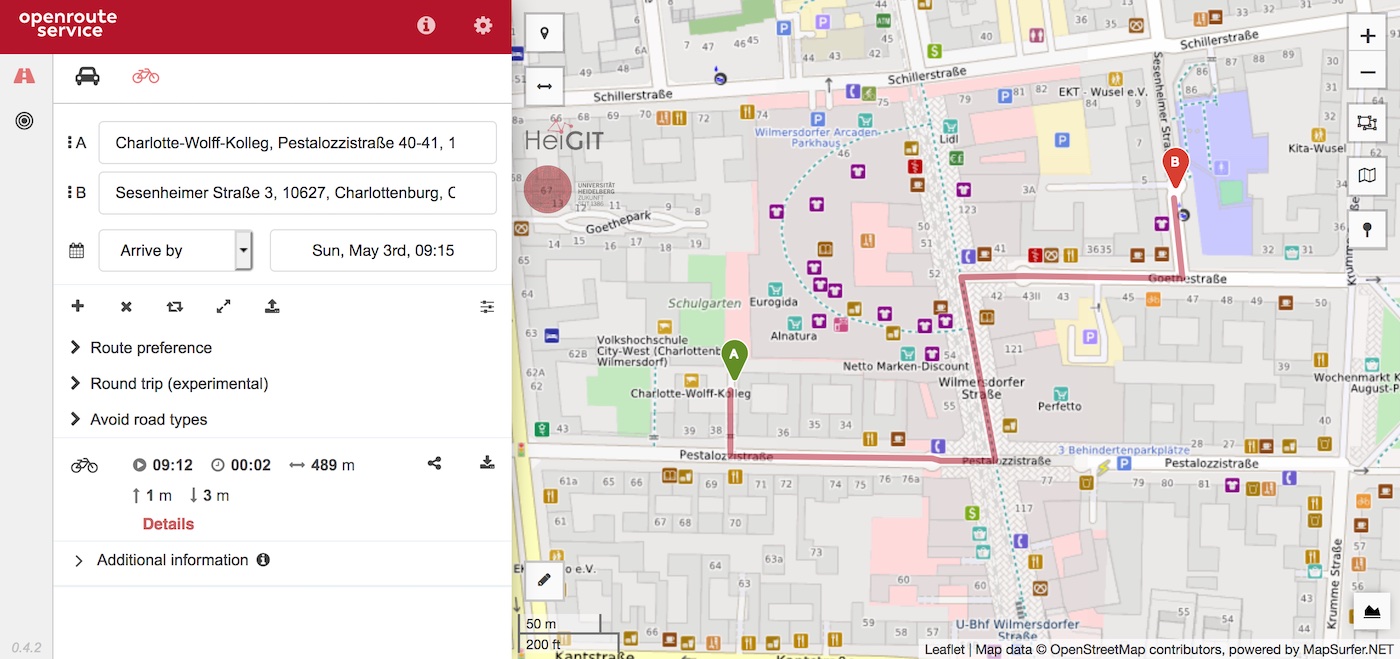We are thrilled to give you a sneak peak into routing with time-dependent road restrictions, the outcome of our collaboration with GraphHopper GmbH in the research project TARDUR supported by the mFUND initiative of the Federal Ministry of Transport and Digital Infrastructure (BMVI) Germany. Our primary focus was on the most common time-dependent restrictions in OSM, namely access restrictions and speed limits. The preview of the new functionality in openrouteservice is currently available for the DACH region on a dedicated demo server. The server uses our maps client modified to query the updated API of the service from the project branch. Key time-dependent features are highlighted in the following interactive examples.
A typical example of temporal access restrictions are seasonal road closures in high mountains. They are of practical importance because they either render the destination unreachable or require a long detour if the recommended route goes over a mountain pass which is closed in winter. To illustrate this, consider the 29 km long connection in the Tyrolean Alps between the upper valley of the Inn River and the Lech River valley via the Hahntennjoch.
If you query for the route in the period from November to April when the road is closed you will get the next best alternative which leads through the Fern Pass.
Not only regular road closures, but also temporary roadblocks such as construction sites are taken into account. Let the renewed Plagwitz Bridge in Leipzig serve as an example here. While currently being closed, it is scheduled to reopen in June 2020.
Temporal restrictions are resolved down to the hourly level, can apply only at certain days of the week and be specific to the transport mode. In the pedestrian zone on Wilmersdorfer Straße in Berlin, for example, bikes are not permitted from Monday to Saturday between 8:00 and 21:00.
Outside of these times it is possible to take the shortcut through the pedestrian zone. Note that we requested the route by specifying the desired arrival time rather than the departure time.
Last but not least, time-dependent speed limits are also taken into account when calculating routes in OpenRouteService. While the observed differences throughout the day are usually limited to variations in the estimated travel time, this can occasionally lead to significantly different routes. This is the case when travelling from Heidelberg Rohrbach to Walldorf. Due to the speed limit of 120 km/h between 6:00 and 21:00 on the A5 motorway, the recommended route over the day is via the state road L598.
At night, however, it is faster to take the Autobahn, even though this route is a few kilometers longer than the previous one.
We are currently finalizing some performance optimizations to enable flexible time-dependent routing over looong distances in openrouteservice at a global scale. The functionality presented here will be included in one of our upcoming releases, so stay tuned.
Happy routing and stay healthy!
see also:









